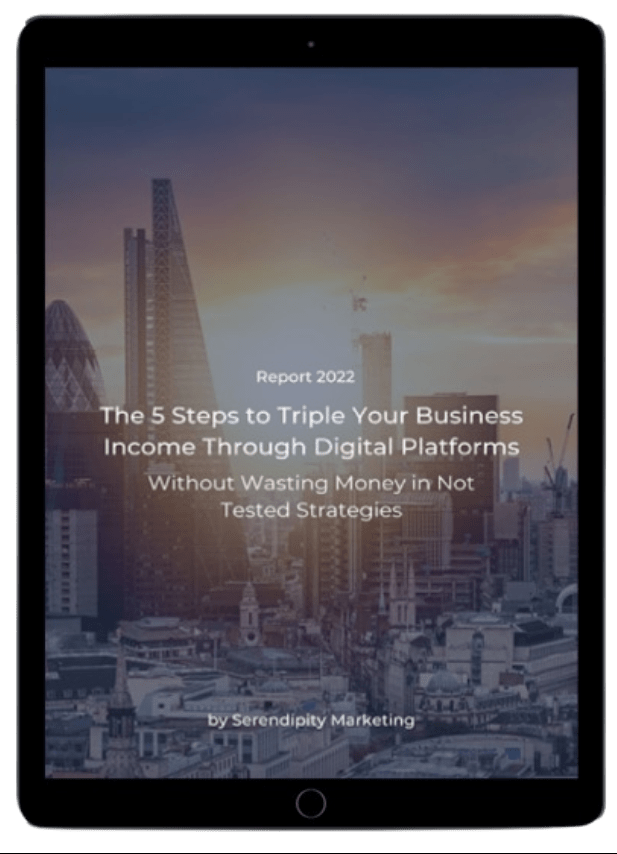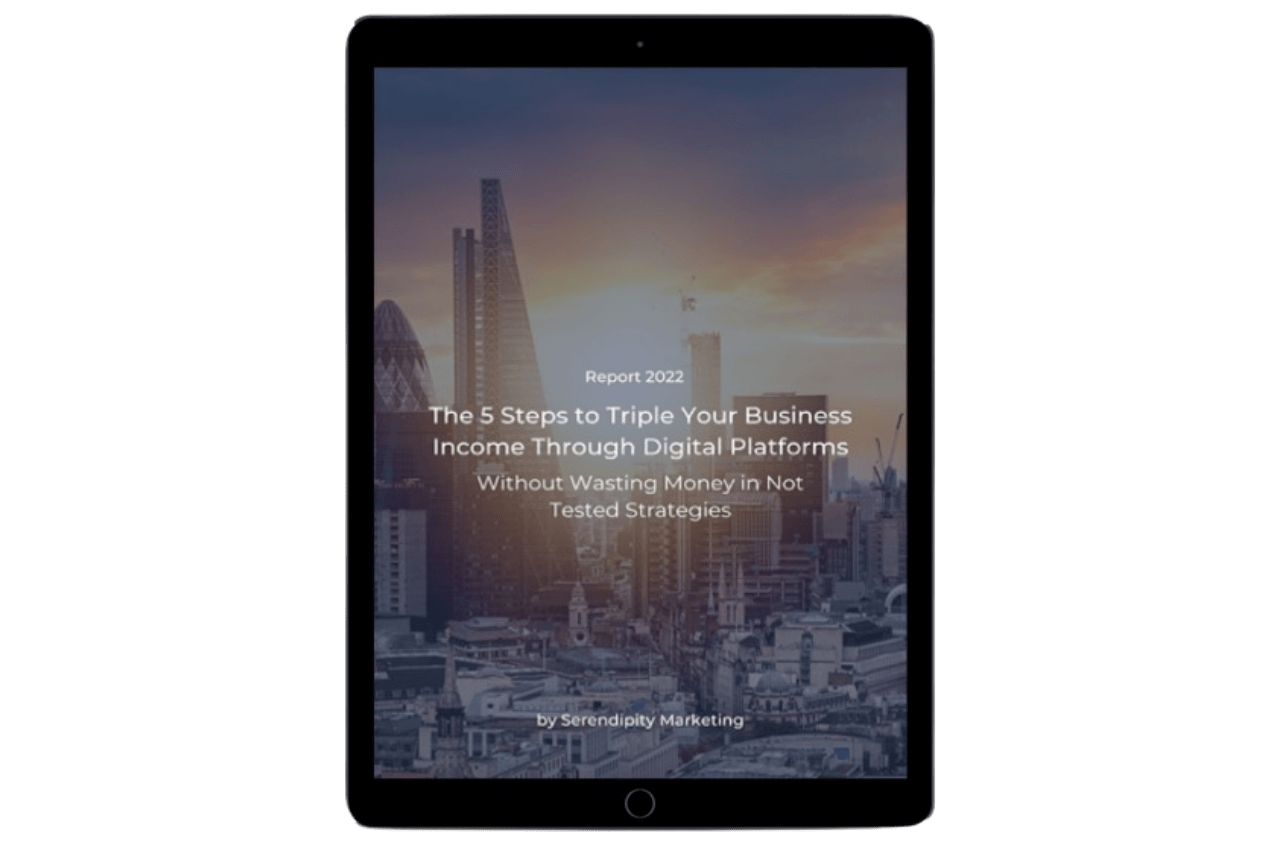Here is the thing… Last year has shown that 97% of people prefer to learn about a local company online rather than anywhere else.
And 92% of users are more likely to pick local businesses on the first search engine results page.
And do you know what is even more convincing?
It’s expected that in 2021 mobile devices will drive more than £1 trillion in local sales.
That is huge, isn’t it?
And as a business, it’s your interest to show up at the forefront so that you also can be a part of this compelling statistic.
But I am sure you probably know this already, don’t you?
It means increasing the chances to get in front of a high number of qualified potential clients who are actively looking for the products or services that your business offers.
If you are looking to increase visibility and traffic to your website from local SEO, then you are reading the right article.
Even if you’re just starting out or not achieving the results you expected, the information shared on this page will help cover all the points and dominate your local SEO.
In this article, I am going to walk you through everything you need to know about local SEO and how it can benefit your local business!
Great, it’s now time to define the basics of local SEO.
What is local SEO?
Now there are several different definitions used to describe SEO, but for the most part, local SEO is the optimization process of your website to drive more local search traffic.
Local SEO basically allows your website to be more visible on search engines when your potential customers search for topics relevant to what your business sells.
Let’s make an example; if you search for “internet marketing consultant in London,” you will find multiple results for agencies in London and it also includes Serendipity Marketing.
In this search, you can also find our agency in what is called a “local 3-pack.” The local 3-pack is a prominent search result that Google considers as the most relevant to the search topic.
It represents probably the most prominent position your business can organically attain.
This is simply because the local pack is what anyone sees before the regular organic search results that appear in a lower position.
Entering the local pack makes your business more exposed to quality searchers.
So, if you are located in a specific area, you have then to start taking into consideration what your potential customers may be having in mind when searching for relevant topics to your business.
That’s where SEO can help you. With local SEO tools, you can identify the keywords your target audience uses when searching online and utilise that in your content to attract them.
So, now it’s time to see some powerful SEO tips that will surely help you increase your business visibility on search engines.
5 Steps for the Best Local SEO
Step #1: Google My Business listings
If you already have a Google My Business account, perfect. Instead, if you don’t, it’s now the time to get one.
It is the basis of your local SEO strategy, and, without this listing, people will have difficulties in finding you.
As a business, GMB (Google My Business) can easily help your business reach your audience in a short time.
Luckily, setting up a Google My Business is very easy.
All you have to do is to go to Google.com/business and create an account or sign in to yours – if you have one already – and follow the prompts on the page.
If your business is in multiple locations or even a franchise, then you can simply type in your business name to find your brand.
Now, if you’re an independent service provider or, in general, any type of local freelancer, your client meetings may happen in their office or a local meeting spot.
In that case, you can use your home address on GMB. So, check the “I deliver goods and services” checkbox, and choose to hide your address.
Then, you’ll need to choose a category that is the most inclusive of your business. Here, the most important thing is to focus on what your business is and not what it has.
After your setup is complete, there will still be a few items to update to make sure your listing is fully optimised.
You can also click on the info section to add more categories, update your working hours, add your website links, and add photos of your work or location.
As soon as your Google listing is live and optimised for local SEO, it’s time to move on to step #2.
Step #2: Local keyword research
Thinking about keywords, there is always the simplest one you want to rank for. For example, if you are a pizzeria, then you’d want to rank for “pizza near me” and, of course, for your brand name.
After this, what you should also focus on is to answer questions related to the search. So, if someone is wondering the types of pizza you have, you may want to optimise your listings for your business name and the keyword “menu”.
Maybe someone is looking to reserve a table. Then, you may want to optimize for your brand name and the keyword “reservation.”
The key point here is to think ahead about what your potential clients may want to know and then optimise for it!
Once your business name is optimized for local SEO, then you’ll want to research other keywords to enter different markets and create new opportunities.
So, the first thing is to look at what your competitors are ranking for.
You can simply do this by going to Google and search “pizza near me.”
After that, you can use a tool like SEM Rush to take a look at the keywords they are ranking for. All you need to do is take your competitors’ URL and paste it into SEM Rush.
This will breakdown their keywords, banks, and some paid ad spend.
After this, run new searches for the keywords that you have already identified.
This will give you a first comprehensive understanding of your local searches and competition.
After this, it comes the technical side. More specifically–On-page SEO.
Step #3: On-Page technical SEO
If you are not familiar with on-page SEO, it is the process of helping your website communicate with search engines.
Search engines perceive a website as valuable if contains certain elements, and that’s what you need on-page SEO for.
This way, Google can classify how your website should be ranked.
If you make it easier for Google, you can guarantee higher rankings.
So let’s now take a look at some of the most important on-page factors for local SEO.
Mobile Accessibility
The first thing to do is to make sure your website is mobile-friendly.
This is mainly important as 78% of location-based mobile searches end in an offline purchase.
In other words, people who search on mobile devices are very qualified prospects.
If you aren’t sure whether your site is mobile-friendly or not, you can use Google’s mobile-friendly test tool. Simply enter your URL and Google will tell you.
Also, it will suggest a few quick pieces of advice for changes.
How much should you invest in Digital Marketing?
Embed a Google Map
The following big tip is to incorporate a map with your business location on your website.
It will help Google harmonize your website with your GMB listing which will boost your on-page SEO.
To do this, just go to https://www.embedgooglemap.net/
and type in your address. Choose your map dimensions. Then get the HTML Code to embed, and that’s done!
Use Normal On-Page SEO Rules
Local SEO is not that different from regular SEO which makes all the normal rules applicable to local SEO. So, you will want to use your keywords with H1 tags, meta descriptions, and alt tags.
YOAST makes this super easy. Just enter your keyword and follow the steps they guide you through.
Yet, even though all these factors help Google understand your site, you still need other help to rank higher than your competitors.
That’s why you also need Off-Page SEO.
Step #4: Off-Page SEO
So, so far, it all was about letting Google know what your website is about. Now, it’s time to work on convincing Google that your website deserves to rank higher than your competition as there could be hundreds or even thousands of websites that can fit the same category.
All search engines use off-page signals to define the “Domain Authority.”
Domain Authority is a score used to determine how strong a website is.
For example, using tools like SEMRush, you can take a look at your domain score and compare it with your competitors’ so that you can have an idea of how much work you will need to do if you want to do better than them.
The best way to improve your domain score for local SEO is to work on citations and backlinks.
Citations are essentially online listings like Yelp, Facebook, or Yellowpages. This will help your business to be seen as active and credible by search engines.
After that, there are backlinks which are arguably the most important factor of off-site SEO.
If you have a very high domain authority website linking to your website, this can incredibly help boost your domain authority as well because it shows that your website is credible.
It’s like if you hang out with a celebrity which can indicate to other people that you must be important as well.
So, working on backlinks is very important for your local SEO.
Now, you may think, “how do you get backlinks?”
It all comes from figuring out how you can provide value to other websites’ audiences.
Let’s make an example; if you’re a pizzeria, you could reach out to a chef’s blog about how to cook your pizza at perfect temperatures.
However, reaching out to different blogs can be very similar to cold calling. So, my favorite strategy is to start your own blog.
When you have a blog and produce high-quality content using SEO best practices, you will start getting inbound traffic organically.
And, if your content is great and engaging your target audience, they will naturally want to link to your blog because they want to share your credibility.
It’s basically a win-win strategy.
Blogging also helps to increase the number of pages you have on search engines, which increases your chances of being reached by your prospects.
Finally, when you start getting higher traffic to your website, you can get more backlinks!
But bear in mind, there is a dark side of backlinks.
If you are getting low-quality backlinks from spammy websites, they won’t only hurt your website, but they could also get your website being penalised by Google, lowering your position on search engine results pages.
And I am sure you don’t want this to happen.
This is why it’s so important to focus on sharing good content.
Step #5: Keep your listings updated
This one is quite straight forward. If you want to give your business listings a fair chance, you have to keep everything up-to-date.
So, if you make any change or move to a new location, remember to update all of your listings because, if you don’t do so, it can decrease your domain authority diminishing your ranking.
There is something more you can do to help your local SEO strategy.
Bonus tip: Build for engagement
Keep in mind, your biggest competition in local SEO is all the websites at the top. Your goal is to do better than them and make Google give you their ranking position.
To do that, build for engagement.
That’s because Google is now using engagement as a ranking factor. Google measures engagement through things like time spent on the site, bounce rate, and click-through rate.
You can use Google Analytics to see your engagement metrics. You can also take a closer look at what your competitors have on their pages and take inspiration to do even better than that.
One easy way to increase engagement is to add a video to your website. If your competitors have a video, then yours needs to be of higher quality and maybe a little bit longer.
How can you get efficient SEO for your business?
Serendipity Marketing is a leading full-service SEO agency London with demonstrated expertise in providing high-value SEO strategies and results to clients internationally.
Our unique approach mixes marketing strategies with psychology science and allows us to empower any business SEO strategy and deliver the best SEO services London.
Relying on such an expert SEO agency London like Serendipity Marketing will guarantee results for your business, ranking on search engines first results page in a quick time.



